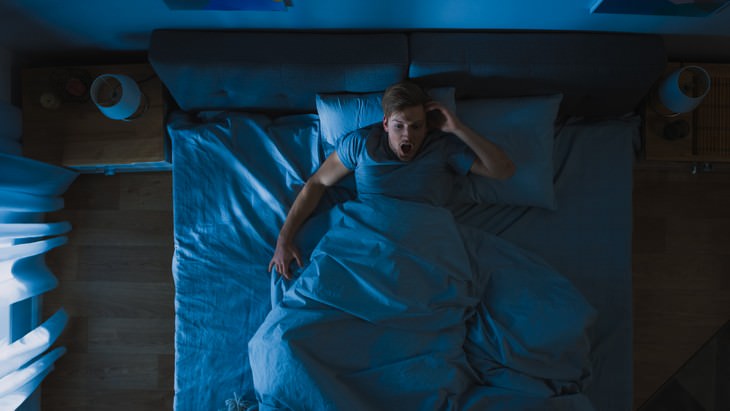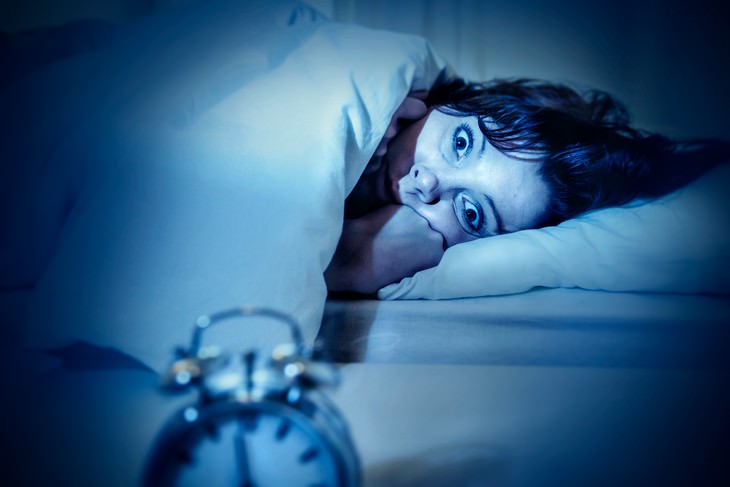
Despite being studied and explored for many years, dreams remain one of the most mysterious experiences of our lives. Dreams are, in essence, a succession of sensations, emotions, ideas, and images that occur involuntarily in a person’s mind while they sleep. They are known to occur mainly (but not exclusively) in a stage of sleep called the Rapid Eye Movement (REM) stage, which resembles being awake the most since, during this stage, brain activity is high.

Do dreams have meaning? This question has occupied humans for centuries. Sigmund Freud, the father of psychoanalysis, believed that dreams are a manifestation of our deepest anxieties and desires, often relating to repressed childhood obsessions or memories. He was so fascinated with the topic that he published a book called Interpretation of Dreams in 1899, in which he devised a series of guidelines to help us understand the motives and symbols that appear in our dreams.
Related: Psychologists Explain the Meaning Behind These Common Dreams
While Freudian dream theory regarding the meaning of dreams is popular, it is certainly not the only one out there. Opinions shift through cultures and times, and while it is not really a scientific matter, many concrete studies have revealed fascinating facts about dreaming. Here are 7 such surprising psychological facts.

Interestingly, research has shown there are distinct differences between the physiology of men and women. A study from 2008 has shown that men's dreams tend to have more aggressive content and physical activity, while women's dreams contain more rejection and exclusion, as well as more conversation than physical activity. Women were also found to have slightly longer dreams that feature more characters. When it comes to the characters that tend to appear in the dreams, 67% of characters in men's dreams are other men whereas 48% of characters in women's dreams are other women.
The reasons for that could vary. Some psychologists assume it’s because men and women are socialized differently as they grow up. But there are plenty of voices that claim evidence shows boys do not need to be taught to be aggressive and girls do not need to be taught to be social. The biologies of boys and girls propel them down these sorts of developmental trajectories. While the trajectories are not inevitable and deterministic, they are real tendencies.

When you’re studying for an exam or dealing with something difficult, have you ever heard the advice ‘sleep on it’? It’s a common belief of sorts that things will make more sense in your mind after a good night’s sleep, and it turns out this belief is rooted in fact.
In an attempt to answer the ever-present question of why we dream, Harvard psychologist Deidre Barrett developed a peculiar theory. She has found that our slumbering hours may help us solve puzzles that have plagued us during daylight hours. The visual and often illogical aspects of dreams make them perfect for out-of-the-box thinking that is necessary to solve some problems. "Whatever the state we're put in, we're still working on the same problems," she said. She added that while dreams have likely originally evolved for different purposes, they evolved over time and were refined in a way that helps the brain reboot and solve problems.

A study suggests that a rare disorder in which people act out their dreams, often with violent thrashes, kicks, and screams is an early indicator for brain disorders down the line, such as Parkinson’s and dementia. The researchers went through medical records to identify reported cases of this so-called REM disorder from 2006 to 2009. They found 27 patients who developed the sleep disorder at least 15 years prior to showing symptoms of neurodegenerative ailments.
The main symptom of REM sleep disorder is, as mentioned, dream enacting behavior, which can reach the point of the person injuring themselves or their bedmates. When the person awakens, they might vividly recall the violent content of the dream corresponding to the kicking or thrashing around.

Experts insist that our brains are incapable of inventing new faces in our dreams. That means, any face you see in your dreams is one you have seen somewhere before. It doesn’t mean, however, that these dream characters are necessarily people that you know well or know at all. Each person constantly encounters faces that the brain doesn’t log as important. So “extras” like a news anchor on a TV segment or a stranger from the train can be featured in later dreams, even if you don’t remember seeing them.
Most of the major players in our dreams tend to be people we know quite well. Sometimes the brain can create a strange hybrid of familiar and unfamiliar. For example, you may interact with a close friend in a dream, but when you wake up you might realize he was “played” by a person with a different face.

According to numerous studies, when animals are in the REM stage of sleep, they show the same brainwaves we do when we are dreaming. In one study, for example, published in the journal Neuron, scientists compared the brain patterns of rats running through a maze with their brain patterns during REM sleep afterward. The study found the brain patterns were so similar they could tell what part of the maze the rats were "dreaming" of.
“The study fits with the idea that physical spaces, like the maze, are encoded into long-term memory during REM sleep,” said Patrick McNamara, director of the Evolutionary Neurobehavior Laboratory at Boston University, in a statement to National Geographic. Other studies have included chimps, dolphins, dogs, and cats. It’s fair to assume that most mammals (at the very least) have dreams.

Lucid dreaming is a state in which a person is aware of the fact they are dreaming while they are still asleep. It is considered a combination of consciousness and REM, which allows the dreamer to control and direct the dream’s content. To learn more about lucid dreaming, check out our previous article on the topic titled A Beginner's Guide to Lucid Dreaming.
According to interesting research done by Jayne Gackenbach, a psychologist at Grant MacEwan University in Canada, people who play video games often are more likely than non-gamers to have lucid dreams where they view themselves outside of their own bodies. They were also better able to influence their dream worlds as if controlling a video-game character. ‘Gamers are used to controlling their game environments, so that can translate into dreams,’ Dr. Gackenbach says.

Staying up late has its perks but also a few downsides. One of them, apparently, is an increased likelihood to experience nightmares. Research published in 2011 in the journal Sleep and Biological Rhythms, revealed that night owls are more likely than their early-bird counterparts to experience nightmares. In the study, 264 university students were asked to rate how often they have nightmares on a scale of 0-4 (0 means ‘never’ while 4 means ‘always’). The participants who tend to stay up late scored 2.10, while the early risers averaged at 1.23.
This is a significant difference, according to the researchers, however, they were not sure what the cause is. Among their speculations is the stress hormone cortisol, which peaks in the morning right before we wake up, a time when people are more prone to be in REM, or dream sleep. If you’re still sleeping at that time, the cortisol rise could trigger vivid dreams or nightmares.
Liked this article? Why not share it with others?